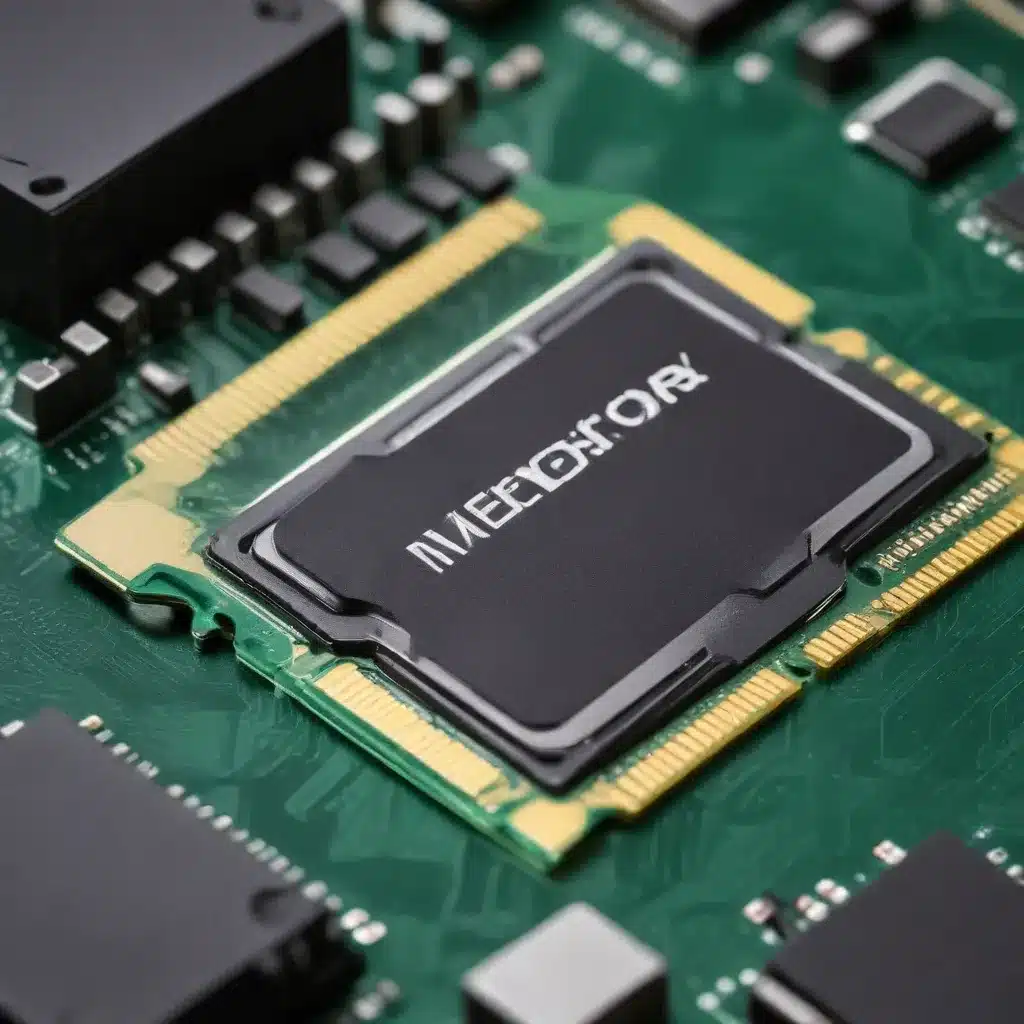
Improving Your Computer’s Performance with Memory Optimization
In the ever-evolving world of technology, the performance of our computers has become a crucial factor in our daily lives. Whether you’re a seasoned IT professional or a casual user, understanding how to optimize your computer’s memory can make a significant difference in its speed and efficiency. In this comprehensive article, we’ll delve into the intricacies of memory optimization, exploring the various hardware components, software configurations, and best practices that can help you unlock your computer’s full potential.
Hardware Components
The foundation of any high-performing computer lies in its hardware. Let’s take a closer look at the key components that play a vital role in memory optimization.
Random Access Memory (RAM)
RAM is the primary memory used by your computer to store and access data quickly. Ensuring you have enough RAM and that it’s functioning optimally is crucial for smooth performance. If your computer is constantly running out of memory, you may experience lags, freezes, and slow application loading times. Upgrading to a higher-capacity RAM module or adding more RAM sticks can often provide a significant performance boost.
Processor (CPU)
The central processing unit (CPU), or processor, is the brain of your computer, responsible for executing instructions and processing data. A powerful CPU can handle more tasks simultaneously, allowing your computer to run more efficiently. When optimizing your computer’s performance, consider upgrading to a newer, faster CPU if your current one is struggling to keep up with your demands.
Storage Devices
The type and speed of your computer’s storage devices can also impact its overall performance. Traditional hard disk drives (HDDs) are generally slower than solid-state drives (SSDs), which offer faster data access and transfer speeds. Upgrading to an SSD, or using a combination of an SSD for your operating system and programs, and an HDD for data storage, can significantly improve your computer’s responsiveness.
Memory Optimization Techniques
Now that we’ve covered the hardware components, let’s dive into the various techniques you can employ to optimize your computer’s memory.
Memory Allocation Management
Proper memory allocation is crucial for ensuring your computer’s resources are used efficiently. Identify and close any unnecessary background processes or applications that are consuming valuable memory. This can be done through the Task Manager or a dedicated system monitoring tool. Additionally, consider adjusting your operating system’s memory management policies to prioritize the allocation of available RAM.
Memory Caching and Virtualization
Caching is a technique that stores frequently accessed data in a faster memory location, reducing the time required to retrieve it. Many operating systems and applications utilize caching to improve performance. Enabling or configuring additional caching options, such as browser caching or disk caching, can provide a noticeable speed boost.
Furthermore, virtualization technologies, such as Windows Superfetch or ReadyBoost, can help improve memory management by anticipating and pre-loading data that is likely to be used, further enhancing your computer’s responsiveness.
Memory Defragmentation
Over time, as files are created, modified, and deleted, the data on your storage devices can become fragmented, leading to slower access times. Regularly defragmenting your storage drives can help consolidate scattered data, improving read and write speeds, and ultimately enhancing your computer’s overall performance.
Operating System Configurations
Your computer’s operating system plays a crucial role in memory management and optimization. Let’s explore some of the key configurations and settings you can adjust to optimize your system’s performance.
Task and Process Management
Monitor and manage the tasks and processes running on your computer to ensure that only the essential ones are active. Use the Task Manager or a dedicated task management tool to identify and terminate any unnecessary or resource-intensive processes, freeing up valuable memory and CPU resources.
Resource Monitoring and Optimization
Utilize your operating system’s built-in resource monitoring tools to track and analyze your computer’s memory usage, CPU utilization, and other performance metrics. This information can help you identify bottlenecks and make informed decisions about optimizing your system’s settings.
Memory Management Policies
Explore your operating system’s memory management policies and adjust them as needed. This may involve configuring the virtual memory settings, enabling or disabling specific memory-related features, or optimizing the memory paging and swapping behavior.
Software Optimizations
In addition to hardware and operating system configurations, there are several software-based strategies you can employ to enhance your computer’s memory performance.
Memory-Efficient Programming Practices
If you’re a developer or work with memory-intensive applications, consider adopting memory-efficient programming practices. This may include optimizing memory allocation, reducing unnecessary data copying, and leveraging techniques like memory pooling or object reuse to minimize memory consumption.
Memory Management in Application Design
When developing or selecting software, pay attention to the application’s memory management capabilities. Look for programs that efficiently manage their memory usage, minimize memory leaks, and provide options for memory optimization and resource monitoring.
Optimization Tools and Utilities
Utilize specialized tools and utilities designed to analyze, monitor, and optimize your computer’s memory usage. These can include memory profilers, system cleanup tools, and memory management utilities that can help identify and address memory-related bottlenecks.
By combining the insights from hardware components, operating system configurations, and software-based optimizations, you can create a well-balanced and high-performing computer that meets your needs. Remember, the key to achieving optimal performance lies in understanding your system’s specific requirements and continuously monitoring and adjusting its settings to maintain peak efficiency.
For more comprehensive IT support and troubleshooting assistance, be sure to visit the IT Fix blog at https://itfix.org.uk/computer-repair/. Our team of experienced technicians is always ready to provide expert guidance and practical solutions to help you get the most out of your computer.












